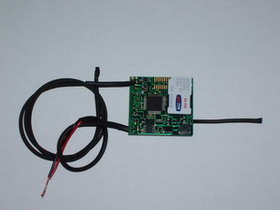GSM bug? Among the GSM type listening devices, that is, those hidden listening systems that feature a SIM card just like your normal mobile phone, and that are capable of transmitting their intelligence by using the GSM phone network, a special place is taken by the GSM-001 model.
In the investigation, surveillance and intelligence field, usage of GSM bugs shows undeniable advantages, especially in terms of comfort and safety, as the surveillance operation can be carried out from an unlimited distance, with a clear signal delivered by the digital phone network, and without having to use complicated and expensive radio receiving equipment with a limited operating range.
What actually for a GSM bug work?
Inside a small box, the GSM bug contains the SIM card housing, mounted on a circuit board which contains the real core of the entire system. Unlike what happens with most normal listening devices of this kind, there is no need to call the GSM bug’s phone number to listen to what goes on around it.
On the contrary, thanks to its voice activation sensor, it will be the GSM transmitter to call us automatically when its high-sensitivity hidden microphone picks up a sound or a motion. And in the same fashion, but via SMS, for audio transmitters installed for example inside a vehicle, when the car is switched on or off the sensor will be activated, and the micro transmitter will send us a text message towards a preset number.
In fact, the possibility of programming its features remotely by sending an SMS, and of receiving notifications in the same format makes this listening device perfect to guarantee privacy and confidentiality.
Thanks to an SMS written in a particular format, you will for example be able to set up the number, towards which such notifications will have to be sent, or the preset number from which you can call the GSM transceiver (which will answer only when calls are coming from that particular number), or disable the GSM audio transmitter at once, and of course enable it later. You will also be able to receive a status report of the bug’s functionalities.
Depending on the audio surveillance operation we wish to undertake, we will have to choose whether to power our bug via the electricity mains, or with a normal 9V battery. The former is recommended for long-term hidden listening operations, while the latter is suitable for short term surveillance operations lasting just a few days.
Once this decision is made, you will have to configure the controlling number as explained above, and the number towards which your GSM transmitting device will call you as soon as its sensor detects a sound. It will also be possible to set the sensor sensitivity level, in order to allow it to call only when it is really necessary, and also set up the calling parameters when the vehicle is turned on or off.
For each function, it is possible to program up to three numbers that the bug will call. Of course, we will also have to make sure that, if the SIM card is a rechargeable one, it has enough credit, especially if the eavesdropping operation involves international or overseas calls.
For more information about how GSM bugs, hidden microphones and a wide range of surveillance and security devices are working, you can visit the Endoacustica site and contact our specialists, who will be glad to assist you.
